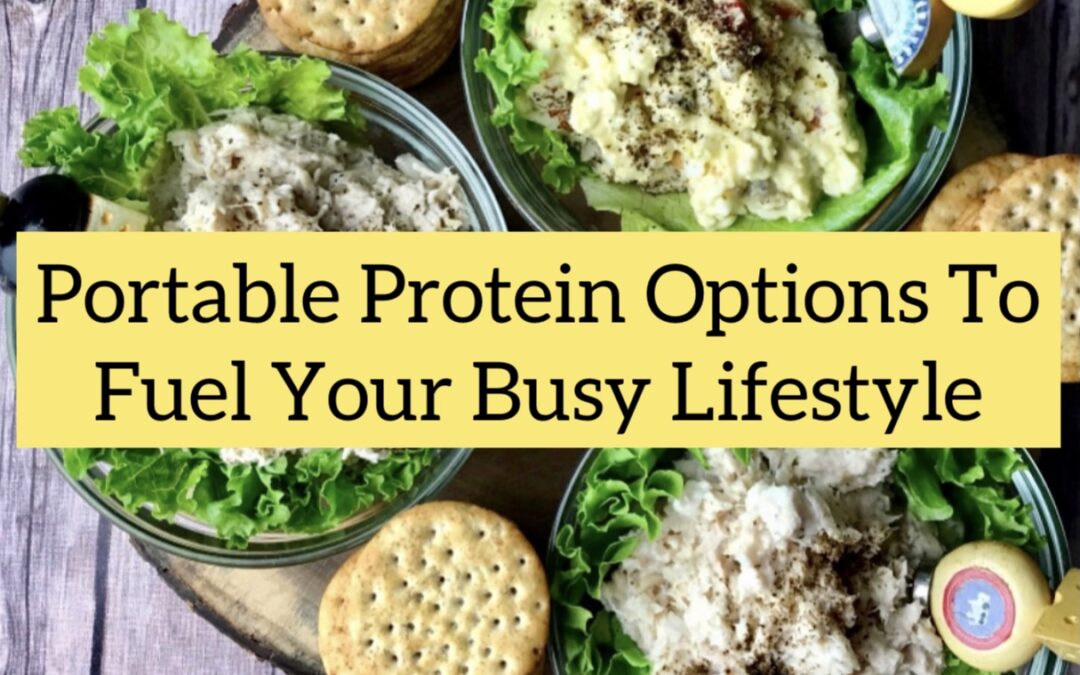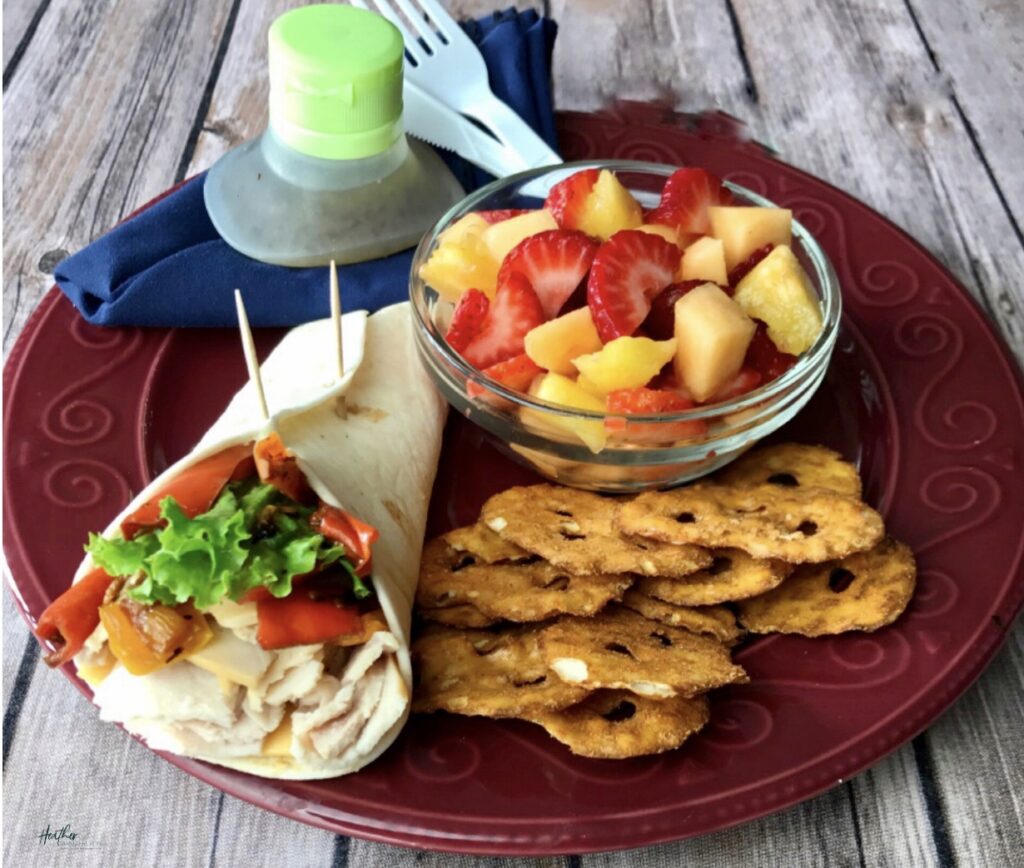Get the protein you need, when you need it, with these high-quality, portable protein options to fuel your busy lifestyle.
Protein! It’s a hot topic in the nutrition world these days, and food manufacturers are responding. Head down any aisle in the grocery store, and you’re guaranteed to find food companies highlighting the protein in their brands. In today’s protein obsessed world, you can even find protein added to potato chips. Is all that protein necessary?
Why Is Protein Important?
Protein is essential for life. Organs, tendons, hormones, hair, nails, and yes, muscles are all made from the protein we eat. Most Americana get enough protein to make these tissues. Athletes have a slightly higher protein requirement than non-athletes for building or maintaining increased muscle mass. Those that are sick or recovering from illness have a higher protein requirement too.
Protein, however, offers additional benefits aside from building tissues. It plays an important role in immunity, wound healing and recovery. It improves satiety. That means the more protein you eat per meal, the fuller you feel. That is a huge benefit for someone on a lower-calorie who doesn’t want to walk around hungry, but a downside to an athlete with a high calorie need trying to gain weight. Some protein-rich foods are good sources zinc, vitamin B12, selenium, B6 and niacin, all micronutrients not as prevalent in carbohydrate rich foods.
How Much Protein Do You Need In A Day?
Protein requirements to survive are met by most Americans. But, protein to support muscular development and specific goals might not be. The amount of protein you need each day is based on your body weight, as well as your goals. Protein needs are increased in athletes, but even then, the amount needed varies based on type of exercise.
To determine you base-line protein needs, calculate your weight in kilograms x 0.8. That will give you your basic needs. In general, endurance athletes need between 1.2 and 1.8 grams of protein per kilogram of body weight. Strength athletes need between 1.2 and 2.0 grams of protein per kilogram.
But, even more important than how much protein you get, is when you eat it.
Focus On Protein Timing Rather Than Eating More
Rather than loading your grocery cart with more protein, focus on when you eat it. Aim to eat a consistent amount of protein at each of your meals. For example, if you eat 90-100 grams of protein per day, try to eat ~25 grams at your breakfast meal, ~25 grams at your lunch meal, ~25 grams at your afternoon meal and ~25 grams at your dinner meal. Switching your focus from the amount of protein you eat per day to the amount you eat per meal is a huge step to proper meal planning.
I give that advice knowing that it is not easy. Helping my clients build balanced breakfasts and mini-meals throughout the day (AKA snacks) that what I spend a lot of time doing. That’s because most protein options are perishable. Having portable protein that can be consumed at any time of the day takes planning. You have to prioritize healthy eating every day, all day and commit to keeping certain foods on hand.
Five Easy, Portable Protein Options
To make it easier, I am sharing a few of my go-to portable protein options with you. Make sure these items are prepared and in your refrigerator Sunday night. That will make it easier to eat right all week long.
Hard boiled eggs
Hard boil eggs (based on the needs of you and your family) and have them cooked and ready in the refrigerator to grab and go. Two of these paired with a piece of fruit make a balanced mini-meal. Or, make an egg salad sandwich. Or, you can use them to make an egg salad sandwich.
Tuna salad
This super-simple protein is a staple in my house. Spread tuna salad on a tortilla with a piece of cheese and bake it in a toaster oven for a quick meal, or take mixed tuna salad, 6-7 crackers and a piece of fruit with you as you run out the door. That’s a balanced meal.
Chicken Salad Mixed With Light Mayonnaise
A container of pre-mixed chicken salad is another portable protein item always in my refrigerator. As with tune, it can be spread on a mini bagel, an English muffin, ½ pita or eaten on cracker as an easy way to get protein, carbohydrates and fats all in one quick meal.
High-Quality Beef Jerky
This is the easiest of all portable protein options. Buy high quality beef jerky and keep it sealed in the cabinet. If the refrigerator is empty and you have got to go, put 2-3 ounces in a plastic bag, grab a piece of fruit, a bottled water and head out the door. It might not be perfect, but it’s balanced.
Sliced Turkey Breast
Purchase a small turkey breast from the store at the beginning of the week and keep it in the refrigerator. Slice it in advance or as needed for turkey sandwiches, wraps or eaten plain with a piece of fruit. I also like to cut it into cubes to build mini turkey and cheese sandwiches between crackers or cucumber slices.
What portable protein foods do you keep on-hand? Share them in the comments so that we can all build a longer list.



 Hi, I’m Heather – a registered dietitian, busy mom, consultant, adventure junkie and travel addict who has mastered living healthy on the go. My blog is where I share simple recipes and healthy living tips to help and inspire others to live their best life.
Hi, I’m Heather – a registered dietitian, busy mom, consultant, adventure junkie and travel addict who has mastered living healthy on the go. My blog is where I share simple recipes and healthy living tips to help and inspire others to live their best life.